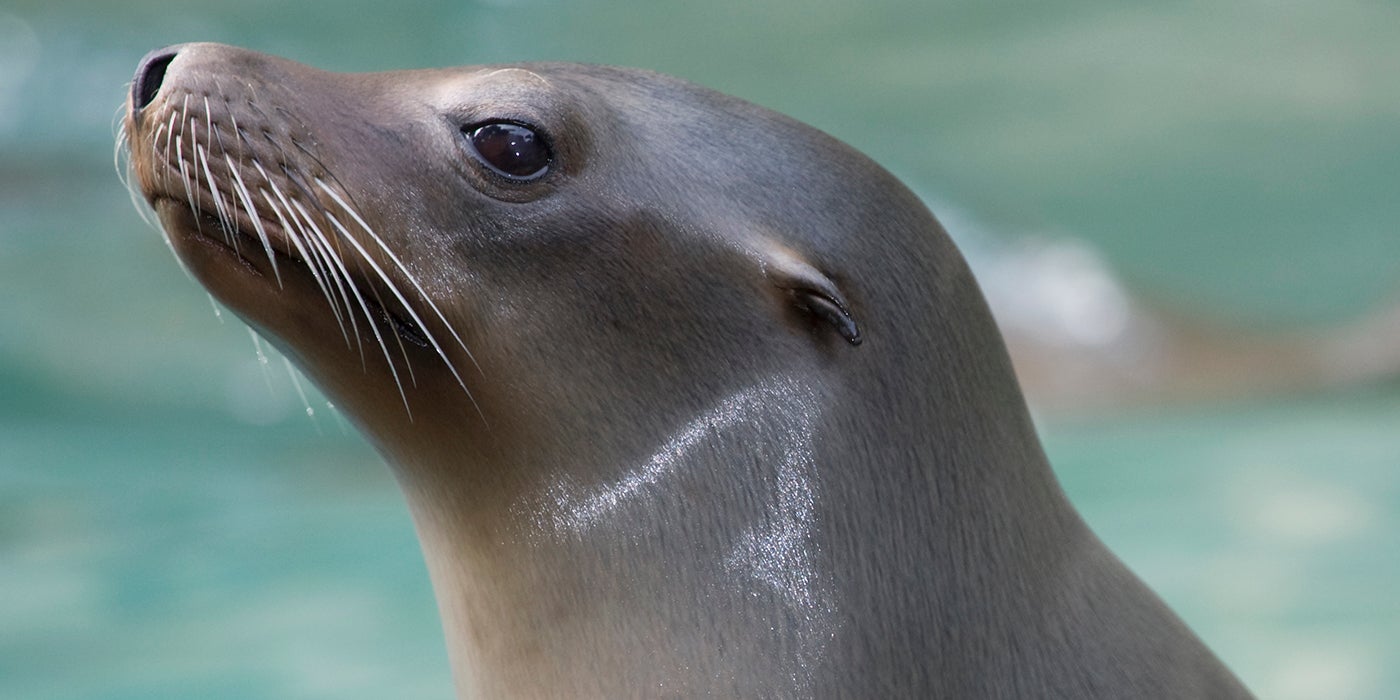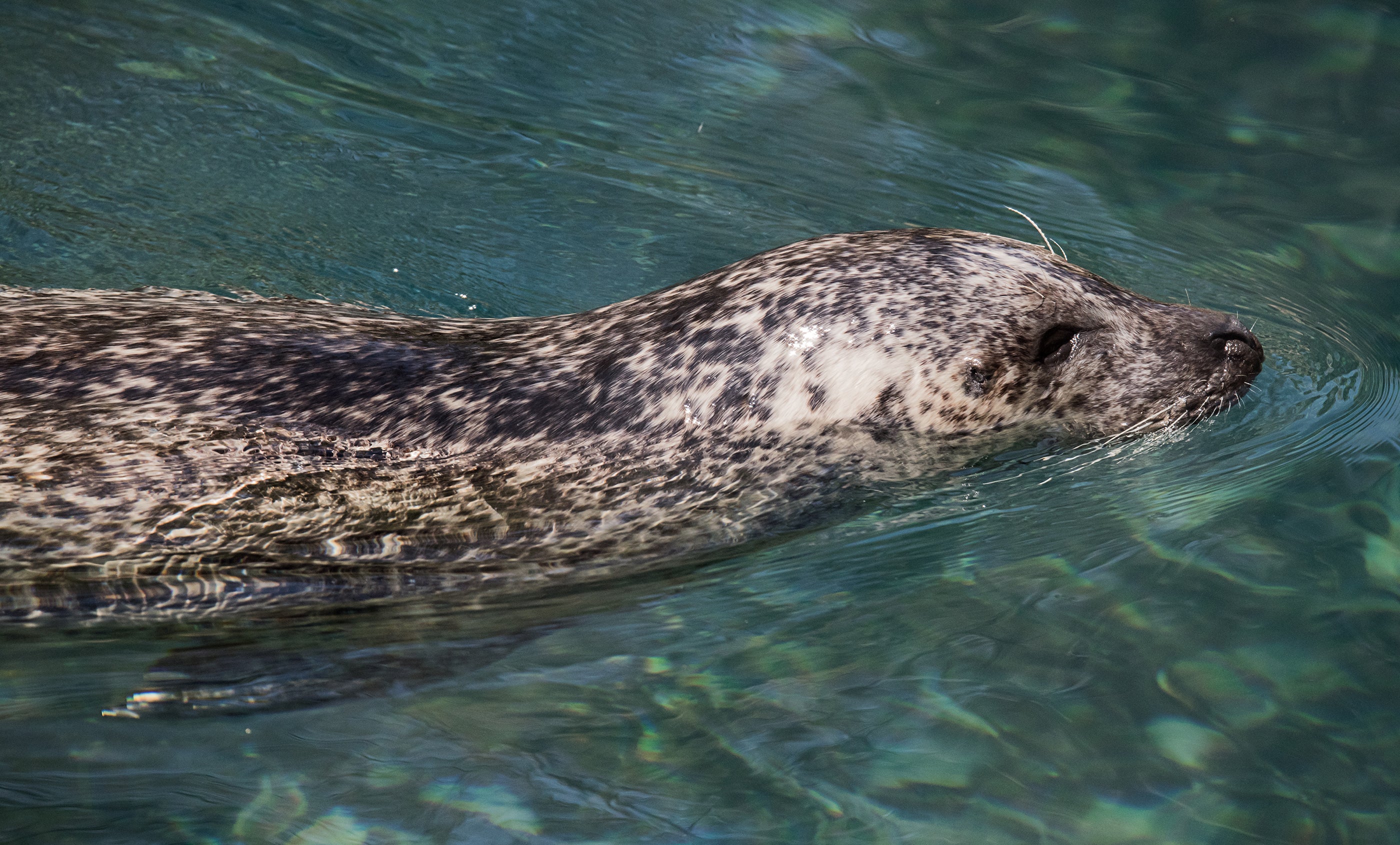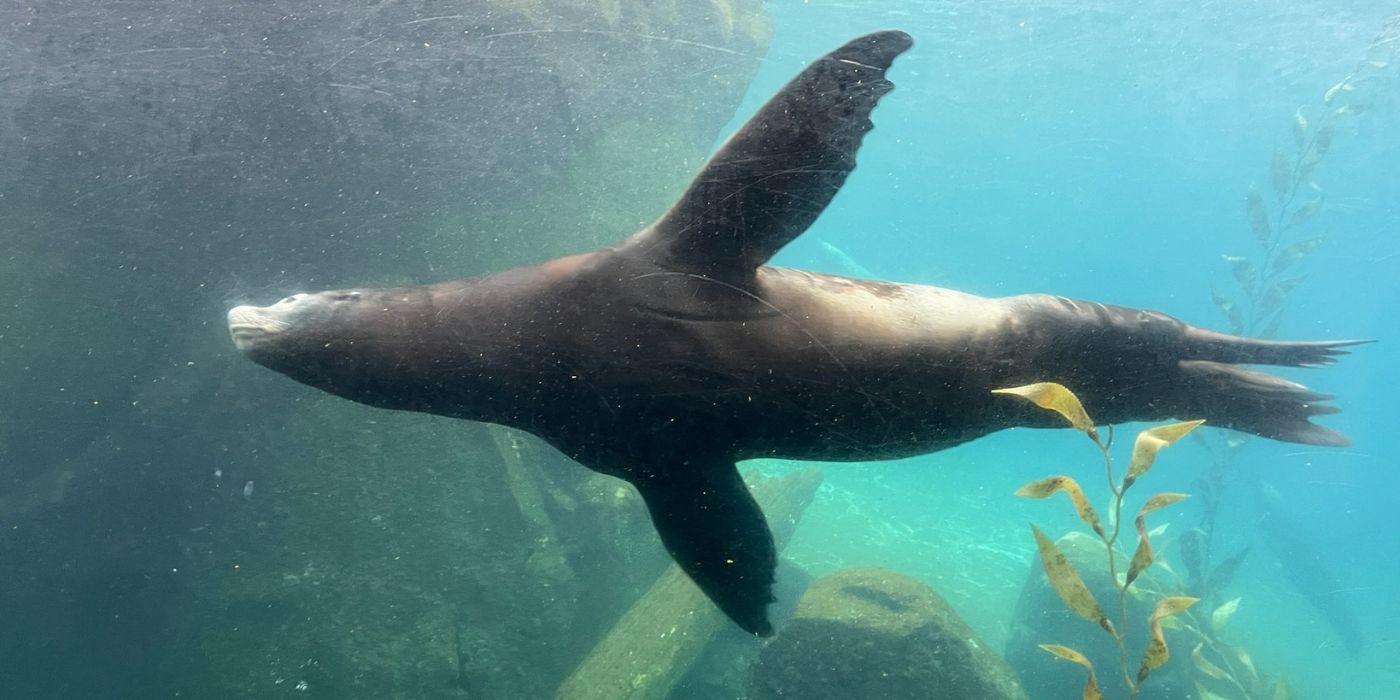Dare to Compare: What’s the Difference Between Sea Lions and Seals?
From whiskers to flippers and a penchant for fish, seals and sea lions have a lot in common. So how can you tell these pinnipeds apart?
1. When sea lions swim, they propel themselves through the water using their front flippers. Seals, on the other hand, build speed with their rear flippers and by moving their lower body side-to-side in a sculling motion.
Exactly how fast can seals and sea lions swim? Sea lions can reach speeds of 25-30 mph! Gray seals clock in at about 14-23 mph.
2. Innie or outie? One quick way to tell a sea lion from a seal is to look at its ears. Sea lions and fur seals (members of the eared seal family) have visible ear flaps, while true seals only have ear holes.

3. Seals, like the gray seal and harbor seal, typically have shorter flippers than their sea lion cousins.
4. What color is a seal? Depending on the species, the color of a seal’s coat varies from white to gray to brownish black, sometimes with dark or light spots. Sea lions are typically tan to dark chestnut brown.

5. Clumsy-looking sea lions “walk” on land. A unique, rotating hip bone allows them to tuck their rear flippers under and support their body weight on all four flippers.
Seals don’t have this capability. Instead, they wriggle like a caterpillar, shifting their weight from front to back and rolling to their destination, like this:
6. You may hear a sea lion before you see it. These noisy pinnipeds bark to mark their territory and signal danger. They also bleat, growl and roar. So what does a seal sound like? Seals have their own means of communicating, including hissing, growling and moaning.
Did you know? The word pinniped stems from the Latin terms pinna and ped, meaning fin-footed.
Put your pinniped knowledge to the test during your next visit to the Smithsonian’s National Zoo! See if you can spot the difference between the California sea lions and gray and harbor seals at American Trail.


